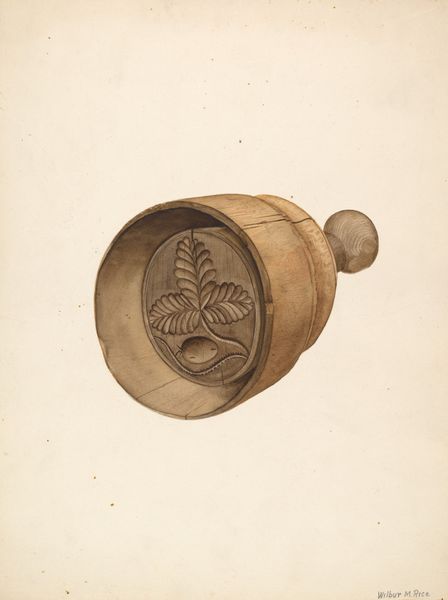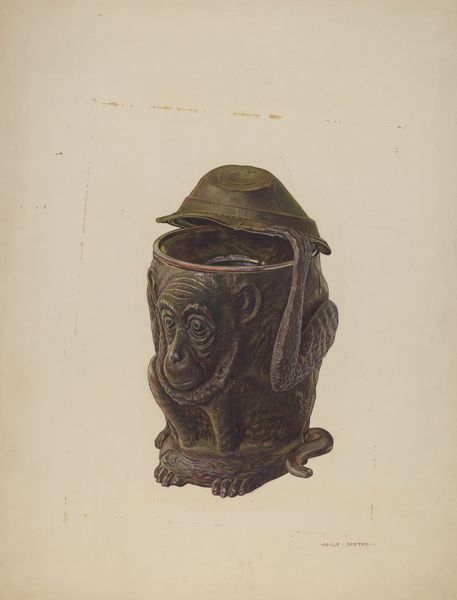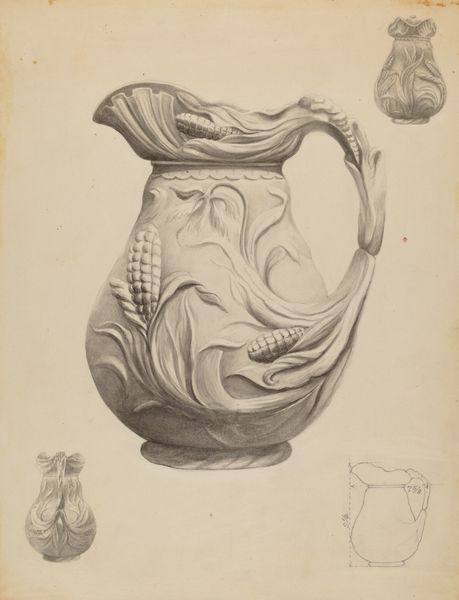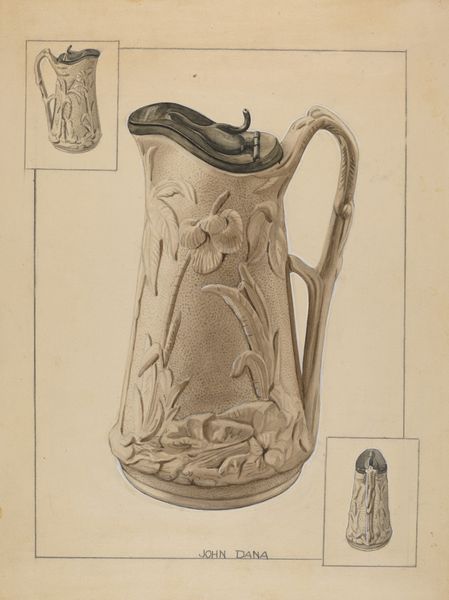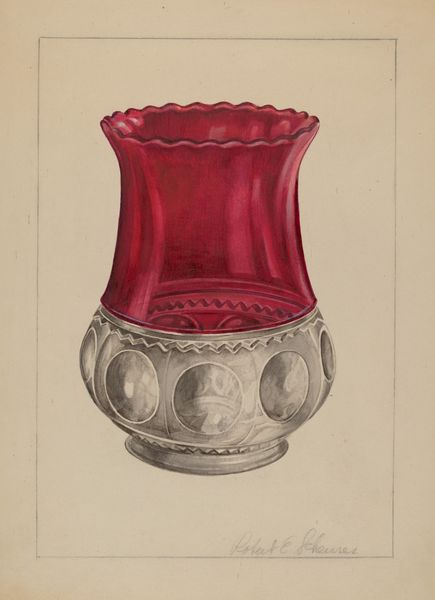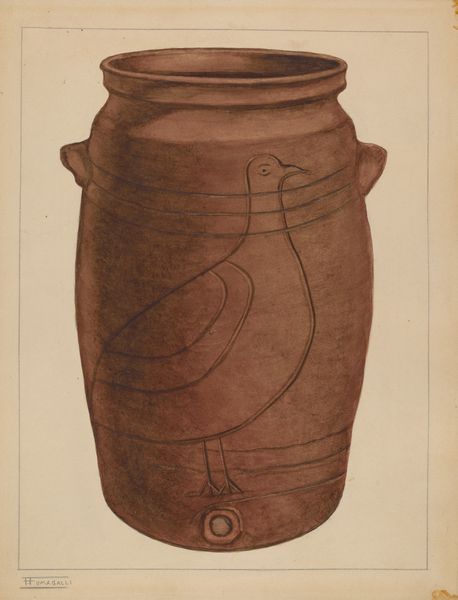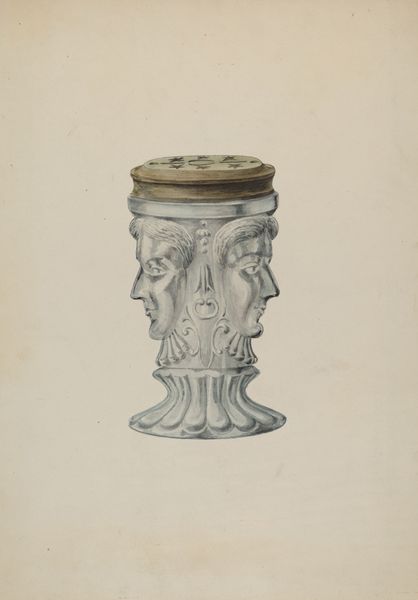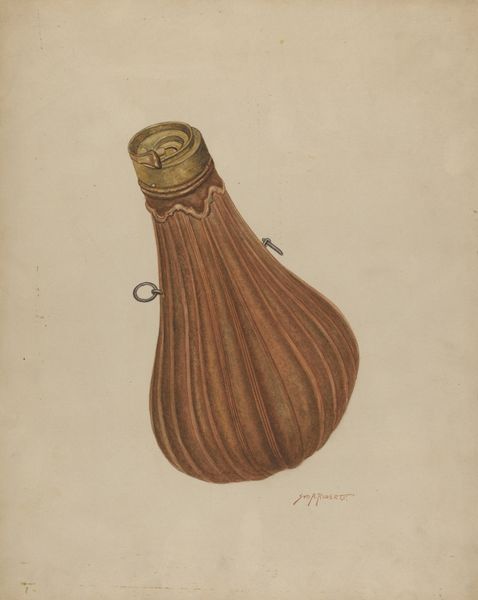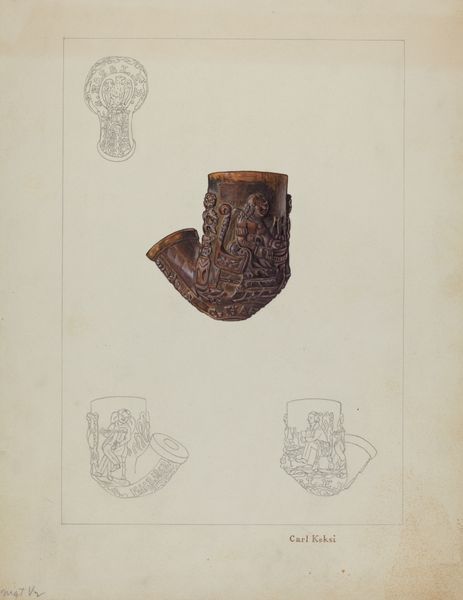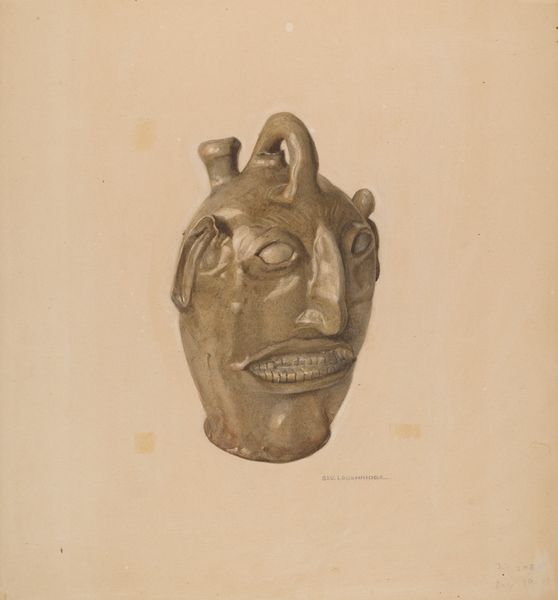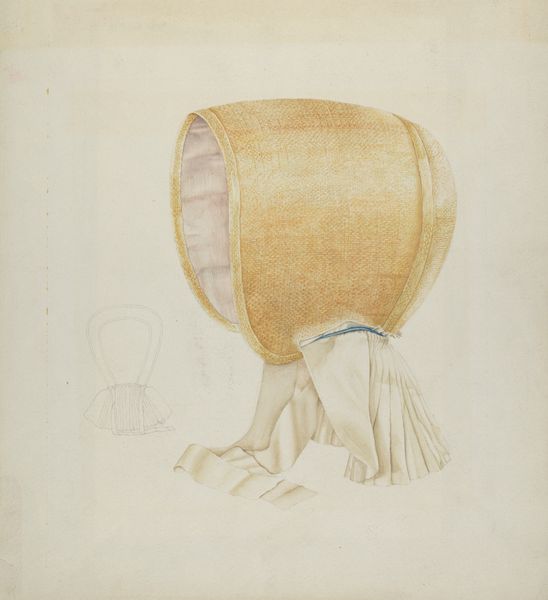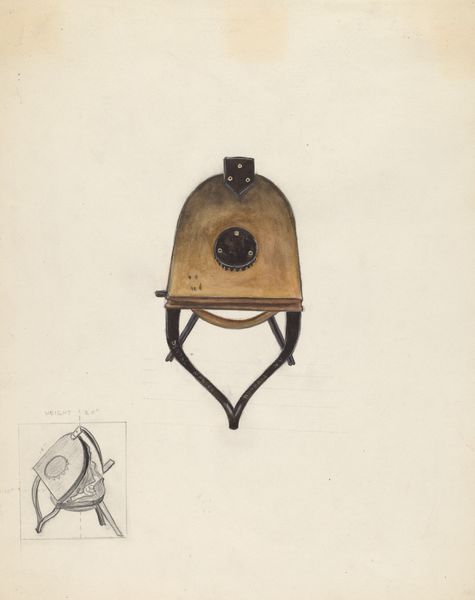
drawing
#
portrait
#
drawing
#
caricature
#
caricature
#
portrait drawing
#
realism
Dimensions: overall: 28.5 x 20.1 cm (11 1/4 x 7 15/16 in.) Original IAD Object: 2 1/2" high; 3 1/2" long
Copyright: National Gallery of Art: CC0 1.0
Curator: Well, that's a striking image. My first reaction is how oddly familiar, and yet distorted, it feels. Editor: We're looking at "Pipe Head: Lincoln" by Carl Keksi, created around 1937. It appears to be a drawing, featuring a somewhat caricatured rendering of Abraham Lincoln integrated into a pipe design. Keksi clearly references Lincoln's image to invite a conversation. What's it evoking for you beyond a sense of strangeness? Curator: Definitely, I'm seeing the merging of the 'everyman' with the iconic. The pipe, a common object, fused with the visage of Lincoln, that's a powerful symbolic blend. It invites reflection on the accessibility, or perhaps the manipulation, of historical figures. I'm wondering, what are the potential implications in this work. The way Keksi is doing this may feel controversial in light of public perceptions of public figures in America. Editor: I appreciate your interpretation. For me, the symbolism centers around how history itself becomes a tool, or even something consumable, like tobacco. Consider the implications of smoking from Lincoln’s head—the weight of his legacy becomes reduced to a momentary pleasure, burned away. It appears quite irreverent. Curator: I agree the 'burning away' metaphor is strong. Keksi seems to push beyond reverence towards questioning. A piece like this underscores how artists can actively participate in the construction – and deconstruction – of collective memory. Do you agree? Editor: I would agree. However, do you also think that his style looks pretty realistic for a caricature? Is he trying to push us to see reality behind symbols of popular culture. The artist even includes smaller sketches on the periphery that emphasize the distortion even further. This piece has far more artistic value and political meaning than it appears at first glance. Curator: Exactly. Keksi, working in a specific social moment, utilizes these symbols, in drawing on paper no less, to offer social commentary, prompting viewers to rethink their understanding of both Lincoln's legacy and the very act of memorialization. It's potent visual rhetoric. Editor: Agreed. In short, it shows us the image, like a pipe, has many handles. Thank you for sharing your fascinating points!
Comments
No comments
Be the first to comment and join the conversation on the ultimate creative platform.
